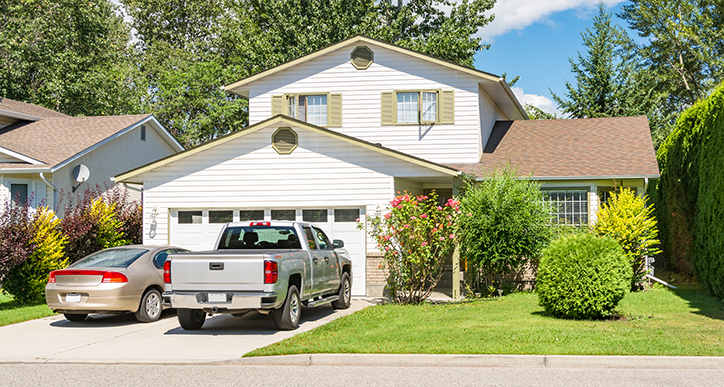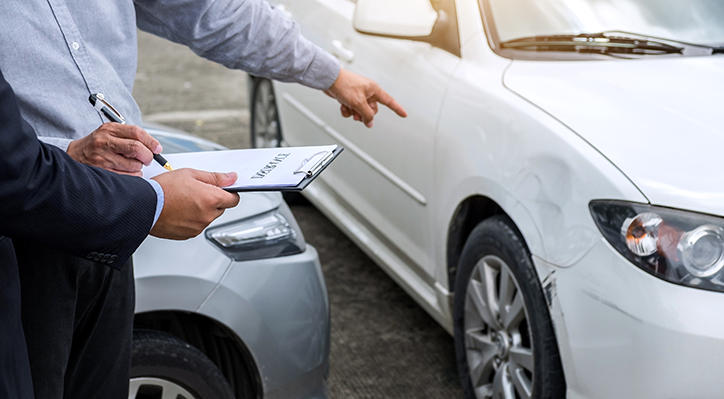How To Save On Your Car Insurance
Posted
on Tuesday, 7 June 2022
by CarTakeBack
Here’s CarTakeBack’s ‘Superb Saver Seven’ for Reducing Car Insurance Costs…
Car insurance is an unavoidable cost of owning a vehicle and with all life’s expenses increasing at the moment, making sure you get a good deal has never been more important.
Compare the Market’s latest data puts the average cost of an annual comprehensive car insurance policy at $1,220, although newly qualified drivers could be looking at over $1,700 for an annual policy. So, any savings on these high figures will have a positive impact on your finances!
Obviously some factors that affect your car insurance rates are out of your control – your geographical location in the country and general accident and crime rates in that region will all play a factor. However, we’re going to look at the things you can control, which should all have a significant effect on the price you pay.
Shop Around
This one is so obvious we’re not including it in our ‘Super Saver Seven’ top tips. But it has to be here, because it’s potentially the biggest saver of them all!
Many people are too busy (or dare we say it, too lazy, and we’re counting ourselves in that) to shop around only a year after having to go through the whole process. But there are so many online services that make the job easy and save you a significant sum. Make the effort and reap the rewards!
We’d recommend using at least two comparison sites, as they will no doubt feature different companies, and ideally, speak to an independent insurance broker too. It is also worth looking at any existing policies you have, such as home or life insurance, as those companies might offer a significant discount on multiple policies.
Before you start the process, have a think about your role and companies or organisations you are involved with – sometimes discounts are available for educators, first responders, military personnel or members of particular associations. It doesn’t cost anything to check and you never know what sort of discount pricing might be available for your circumstances.

So, on with the juicy tips! Here’s how to make sure whichever company you go with will be offering you the best deal possible!
1. When and How you Pay
Buying your policy early
Insurers can change their prices at any time, so the price you see when you first compare quotes might change if you return to buy later. The general advice we’ve read is that better deals are found early on. As you can usually purchase a policy 29 days before it starts, we’d recommend comparing prices the week before that period.
Paying up-front
Paying monthly for your car insurance is essentially a loan with interest (unless you've been offered the same overall price split into monthly payments), so when you’ve secured a good total policy price, you’ll save money overall by paying up-front. If paying annually is too big a hit, you could consider other options, such as using a 0% credit card, as long as you manage the repayments and pay off the balance before the interest-free period ends!
Increasing your voluntary excess
Another tip linked to your payments is increasing your voluntary excess. You are of course taking the risk that if you do have an accident you’ll have to pay out more when you make a claim, but increasing your excess even a little can significantly reduce the overall cost of your policy.

2. Super-Size your Policy!
There are two ways you can save money with this tip – either by insuring more than one vehicle and/or including multiple drivers. Obviously the first one only works if there are additional vehicles needing insurance in your family, usually from the same address. Most companies will offer deals on multiple cars whether you approach them with more than one vehicle or ask about adding another vehicle to an existing policy. (An important thing to bear in mind here is ensuring that a lead driver is named for each policy to help build-up or protect that person’s no claims.)
Insurers can usually also offer discounts if you need to insure multiple drivers, which would bring down each person’s payment if you are sharing the cost. An additional driver can even reduce a policy’s premiums overall if it’s an experienced driver with a clean license. This tends to be most effective when the main driver is considered high-risk, which includes anyone that has recently passed their test, if they are under 25, or anyone with previous claims or convictions. In these cases, if the experienced driver has a ‘responsible’ career, they can bring even bigger savings to a policy.
While all these types of savings can be significant, it’s really important to be honest about the main driver, and ensure additional named drivers only use the car occasionally, or you could invalidate your cover.

3. How and What you Drive
How you drive
Being a good driver will help to keep your insurance payments as low as possible. Simply paying attention and abiding by speed limits will help you to avoid most accidents. If you maintain a clean driving record and build up your no-claims bonus or safe driver reward, you will automatically quality for cheaper rates of car insurance.
While you need to find out what the parameters are for the policy you’re considering, reducing the amount you travel can also have an impact on the cost of your policy. Obviously the less kms you travel in a year, the smaller the risk you are to insurers, and the cheaper your policy. It can also make a significant difference whether your travel has to cover your commute, or if you can categorise your travel as ‘social use’. As with the main named driver, it’s essential to give a realistic description of your car use and your estimated kms covered, to ensure your policy is valid.
*Bonus Top Tip for Older Drivers - If you drive for or to work, when you retire, remember to tell your insurer straight away about the reduction in your annual distance travelled – it may well result in a reduction in your premium.
Pro Savings
Even if you are a safe driver with a clean license, you can often reduce your premium by taking an advanced driving course, sometimes referred to as defensive driving training. As it will cost money to take the course, older drivers may find that the savings would not out-weigh the cost, but for young or newly qualified drivers, there may be significant savings.
What you drive
We’re not about to advise you change your car to get a cheaper policy – that’s pretty drastic and we’re sure you’re well aware that larger and more powerful cars will always cost more to insure. However, if you were considering modifications, do bear in mind that these can have a significant impact on your policy price. Upgrades to styling such as alloys, audio, or performance, could all mean a big hike in your premiums because of making your vehicle more attractive to thieves and costing more to fix or replace. The only positive here may be modifications that make your car more eco-friendly. But check any changes in advance with your insurance company to be sure.

4. Improve your Credit Rating
This isn’t about to turn into a financial advice article – that’s not our area of expertise. But while researching the best tips for you on this topic, it became clear that your credit rating can affect the insurance rates that you’re offered.
The reason is that insurers use a lot of factors to calculate your premium, and while information such as your age and experience may influence your quote more, a poor credit history is reportedly linked to people more likely to claim – making you more of a risk.
Customers with a higher credit score typically receive lower premiums, so while that can be down to other reasons, it’s another factor to bear in mind if you are keen to reduce your car insurance as much as you can.
There is plenty of advice out there for improving your credit score and it may help with other financial aspects of your day to day life.

5. Consider your Level of Cover
Insufficient cover won’t save you money in the long run. However, to ensure you’re not wasting money, it’s important to consider what kind of policy is right for you.
These are the levels of cover available:
· Comprehensive - the highest level of cover, protecting you, your car, other people, and their property.
· Third party, fire and theft - which won’t protect you or your car if it’s involved in an accident that you’re responsible for. But it will cover you and your car for fire damage, theft or attempted theft and it will protect passengers in your car (plus other people and their property if they’re in an accident you’re responsible for).
· Third party property - this level only covers you for damage to other cars, property and people with no personal protection at all.
· Compulsory third party (CTP) - this minimum level is mandatory insurance every car has to have in every state and territory of Australia. It only covers people outside of your car that might be injured in an accident.
So, if you are driving an extremely old car, it may make sense to have a third party, fire and theft policy, as the car would likely be written off in the case of an accident. But always carefully consider this aspect of your cover decision and ensure you have the policy you need.
It’s also important to check that a lower-level policy is actually cheaper. Because people selecting third party insurance tend to be young and lodge more claims, the price doesn’t always drop as much as you’d expect.
Only pay for what you need
As well as picking the right type of cover, it may help to remove add-ons that you either don’t need or you can pay for cheaper elsewhere. For example, consider if you really need expensive courtesy car cover. Maybe you would manage without, or borrow a relative’s car? Items like windscreen or breakdown cover may be cheaper individually, and roadside assistance might be covered by your credit card or through your work?
Administration costs
Administration charges can also be a sneaky increase to costs, so always check the small print. Throughout your cover period, you have to report changes in your job, address or the vehicle itself and some policies may have an admin charge for any change at around $50 a go! If you’re likely to be changing any of this information within your cover period, it’s worth paying a little more for a policy that offers free administrative changes.
Bank-it with Black Box Insurance
You could try a completely different type of pay-as-you-go policy, which charges your premiums based on actual data about your driving, recorded by either a black box (small GPS device) fitted in the vehicle, or a smartphone app.
The data tracks the quality of your driving, such as your speed and how sharply your brake, as well as what time of the day or night you are on the road. The better you drive and the lower risk you appear to be, the lower your premium will be over time. This telematics insurance is ideal for careful, low-distance drivers and an added bonus is that the black box acts as a tracker if your car gets stolen.

6. Be Secure to Save your Dosh
Improving the security of your car will usually have an impact on your premiums. However, if you are purchasing any security device or storage space purely to reduce your insurance, you need to check the savings will justify the cost. An easy way to do that is to get a quote with the company you are considering without those security features specified, or contact them and ask directly what security factors will impact the policy fee.
Anti-theft devices such as alarms and immobilisers may well be worth the effort, but the other significant factor in vehicle security is where your car is parked! You may not have any choice, but if you can get your car off the road overnight it’s likely to lower your premium. If you have a garage full of stuff that could be cleared out it’s definitely worth making the space for your car, or maybe your elderly neighbour doesn’t use their driveway and you could offer an arrangement with them to use it overnight in exchange for mowing their lawn or taking out their bins?

7. Make your Job Count
There isn’t an official scaled list of jobs that insurers refer to in order to help establish your car insurance premium. However, along with every other ‘risk assessment’ of your information, your work role will definitely impact your policy price and it can be significant!
Fruit and vegetable pickers, waiters, construction workers, security guards, couriers and any role that tends to involve shift work are included in the jobs that insurers consider high-risk. There are many reasons for this, from the potential of lawsuits, to people being in a rush, driving tired, or simply the increased time they spend on the road. The similarity is that most of these roles are statistically linked to more pay-outs.
While you must not lie about your job, as it will invalidate your insurance, you should think carefully about the job title you submit. It is important to be accurate, but there are often alternative titles for a role. For example, a ‘Cook’ will usually pay less than a ‘Chef’ and a ‘Hairdresser’ will pay less than a ‘Barber’. If you work as a developer in ‘Computer Gaming’ you might pay less stating your role is in ‘Software’ and reporters who work at a desk could use the title ‘Sub-Editor’ or ‘Writer’ rather than ‘Journalist’, which falls into a high-risk category.
Remember you need to tell your insurer if you change jobs. Plus, if you stop using your car for work for any reason, then let them know that too – it should decrease your premiums.

Did our Superb Saver Seven help to reduce your premiums?
Sadly, car insurance, like other life expenses, is only likely to increase in the future. But by following our top tips, you can make some savings on your next car insurance quote and ensure you’re getting the best deal and cover for you.
You might like to read our blog on ‘What Makes a Good Driver’… that should even help you reduce the cost of your next car insurance policy!
We've also researched how to save money at the pump, so check out our blog on Fuel Saving Tips.